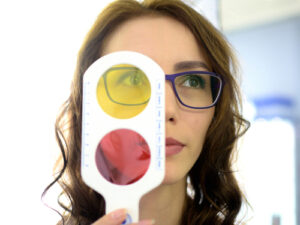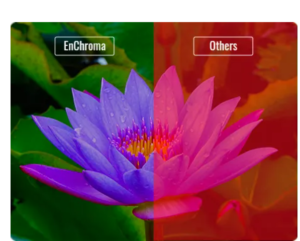Do Enchroma Glasses Work to Treat Colorblindness?
Colorblindness can complicate your everyday life. You may find reading, choosing matching clothes, driving, and cooking more challenging.
The good news is you can address color blindness and significantly improve your life with the help of Enchroma glasses. These revolutionary lenses are specially designed to treat common forms of color blindness, allowing you to see the world around you with greater clarity.
Keep reading to learn more about colorblindness and how Enchroma glasses help with color deficiency.
Types of Color Blindness

To better understand the types of color blindness, you must first understand how color vision works. Inside your eyes are photoreceptors that help you see.
These are rods and cones. Both are found on your retina and relay light information to your brain.
The rods are located outside the central part of your retina. Your eyes contain about 120 million rods.
Rods are responsible for night vision because they’re susceptible to low-intensity light. However, rods are not color-sensitive, so everything seems gray at night.
Your eyes contain approximately 6 to 7 million cones. They’re concentrated at the central part of your retina, called the fovea centralis.
Cones require more light and are used for distinguishing colors. Your brain utilizes the inputs from the cones to help you perceive different colors.
There are three kinds of cones:
Red Cones or L-Cones
Red cones account for 64 percent of the total cones in your eyes and are sensitive to long-wave light.
Blue Cones or S-Cones
Blue cones account for 2 to 7 percent of the total cones and are sensitive to short-wave light.
Green Cones or M-Cones
Green cones account for 32 percent of the total cones and are sensitive to medium-wave light.
The three kinds of cones make up your color vision. Color blindness is directly related to the available photoreceptors in your eyes and is categorized as follows:
Monochromatism
In monochromatism, there’s only one type of cone or no cones there at all.
Dichromatism
In dichromatism, only two types of cones are present.
Anomalous Trichromatism
In anomalous trichromatism, all three cones are available, but one cone type perceives light slightly out of alignment.
Various dichromats and anomalous trichromats exist depending on the missing cone or its malfunction.
- Protanomaly/Protanopia – Malfunctioning/missing L-Cone (red)
- Tritanomaly/Tritanopia – Malfunctioning/missing S-Cone (blue)
- Deuteranomaly/Deuteranopia – Malfunctioning/missing M-Cone (green)
Colorblindness affects more men than women. It’s often inherited and is present from birth.
While people with color deficiency see colors, their color perception is limited and incorrect. Because of this, it makes it hard for them to differentiate various hues, shades, and tones.

Color blindness isn’t the same for everyone and varies in intensity.
There are different types of color blindness, and they include:
Red-Green Color Blindness
Red-green color blindness is the most common kind and makes it hard to tell red and green apart. There are three types of red-green color blindness, and they include:
Protanomaly
Red appears as green and is less vibrant.
Deuteranomaly
Green looks more like red.
Deuteranopia and protanopia
Green and red look the same, so you cannot distinguish them.
Blue-Yellow Color Blindness
Not many people have blue-yellow color blindness. Blue-yellow color blindness makes it difficult to differentiate between blue and green and yellow and red.
There are two kinds of blue-yellow color blindness:
Tritanopia
It’s difficult to distinguish blue and green, yellow and pink, and purple and red. Generally, colors appear less bright for people suffering from tritanopia.
Tritanomaly
Tritanomaly makes it hard to distinguish between blue and green and yellow and red.
Complete Color Blindness (Monochromacy)
Complete color blindness, called chromatopsia or monochromacy, happens in one out of every 33,000 people. When you have this form of color deficiency, you cannot see any color. Instead, everything appears in black and white.
Tetrachromacy
In tetrachromacy, you’ll have four cone types in the retina rather than the standard three. About 12 percent of women see up to 100 times more colors than everyone else.
How Enchroma Glasses Help with Color Blindness
Enchroma glasses correct the common types of color blindness. The lenses reverse the effects caused by deficient green or red cones in your eyes.
If you have a red-green color deficiency, there’s an overlap between the light wavelengths used by your brain to detect red or green color, which confuses your brain. Enchroma’s lens technology uses a light filter technique that filters out overlapping wavelengths of light like green and red, where your brain typically gets confused and has difficulty determining certain colors.
These glasses absorb and block some of those wavelengths, which corrects the overlapping issue and helps your brain differentiate colors better. The result is enhanced contrast in green or red signals detected by your eye.
Enhancing contrast with green or red signals makes it easier to differentiate them and allows you to experience greater color clarity. Enchroma lenses make it easier to match colors in your clothes, determine when fruits are ripe, and know when some foods are cooked without assistance.
Each Enchroma lens is comprised of Trivex lens material. The material is more impact-resistant and durable compared to other kinds of lenses.
Trivex also delivers crisper, clearer images. Enchroma glasses have separate lenses for outdoor and indoor conditions to enhance the spectrum of color vision in both settings.
The indoor lenses are perfect for low-light conditions, where differentiating shades is challenging. Outdoor lenses improve your vision even in direct sunlight, offering better hue distinction.
Both lenses provide 100 percent UV protection. They are also anti-reflective on all sides to remove haze and increase clarity.
See Better with Enchroma

Enchroma lenses are highly effective for people with common color deficiencies. If you suffer from color blindness, our licensed optician at Desert Vision Center can help determine if you’re a good candidate for Enchroma.
Want to bring back color into your life? Talk to our optician at Desert Vision Center in Rancho Mirage, CA, today to take a color blindness test and test Enchroma glasses in person.

